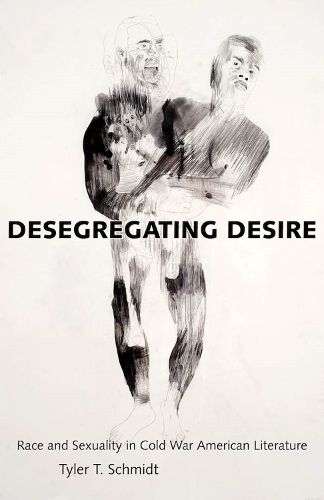Readings Newsletter
Become a Readings Member to make your shopping experience even easier.
Sign in or sign up for free!
You’re not far away from qualifying for FREE standard shipping within Australia
You’ve qualified for FREE standard shipping within Australia
The cart is loading…






This title is printed to order. This book may have been self-published. If so, we cannot guarantee the quality of the content. In the main most books will have gone through the editing process however some may not. We therefore suggest that you be aware of this before ordering this book. If in doubt check either the author or publisher’s details as we are unable to accept any returns unless they are faulty. Please contact us if you have any questions.
A study of race and sexuality and their interdependencies in American literature from 1945 to 1955, Desegregating Desire examines the varied strategies used by eight American poets and novelists to integrate sexuality into their respective depictions of desegregated places and emergent identities in the aftermath of World War II. Focusing on both progressive and conventional forms of cross-race writing and interracial intimacy, the book is organized around four pairs of writers. Chapter one examines reimagined domestic places, and the ambivalent desires that define them, in the southern writing of Elizabeth Bishop and Zora Neale Hurston. The second chapter; focused on poets Gwendolyn Brooks and Edwin Denby, analyzes their representations of the postwar American city, representations which often transpose private desires into a public imaginary. Chapter three explores how insular racial communities in the novels of Ann Petry and William Demby were related to non-normative sexualities emerging in the early Cold War. The final chapter, focused on damaged desires, considers the ways that novelists Jo Sinclair and Carl Offord, relocate the public traumas of desegregation with the private spheres of homes and psyches.
Aligning close textual readings with the segregated histories and interracial artistic circles that informed these Cold War writers, this project defines desegregation as both a racial and sexual phenomenon, one both public and private. In analyzing more intimate spaces of desegregation shaped by regional, familial, and psychological upheavals after World War II, Tyler T. Schmidt argues that
queer
desire–understood as same-sex and interracial desire–redirected American writing and helped shape the Cold War era’s integrationist politics.
$9.00 standard shipping within Australia
FREE standard shipping within Australia for orders over $100.00
Express & International shipping calculated at checkout
This title is printed to order. This book may have been self-published. If so, we cannot guarantee the quality of the content. In the main most books will have gone through the editing process however some may not. We therefore suggest that you be aware of this before ordering this book. If in doubt check either the author or publisher’s details as we are unable to accept any returns unless they are faulty. Please contact us if you have any questions.
A study of race and sexuality and their interdependencies in American literature from 1945 to 1955, Desegregating Desire examines the varied strategies used by eight American poets and novelists to integrate sexuality into their respective depictions of desegregated places and emergent identities in the aftermath of World War II. Focusing on both progressive and conventional forms of cross-race writing and interracial intimacy, the book is organized around four pairs of writers. Chapter one examines reimagined domestic places, and the ambivalent desires that define them, in the southern writing of Elizabeth Bishop and Zora Neale Hurston. The second chapter; focused on poets Gwendolyn Brooks and Edwin Denby, analyzes their representations of the postwar American city, representations which often transpose private desires into a public imaginary. Chapter three explores how insular racial communities in the novels of Ann Petry and William Demby were related to non-normative sexualities emerging in the early Cold War. The final chapter, focused on damaged desires, considers the ways that novelists Jo Sinclair and Carl Offord, relocate the public traumas of desegregation with the private spheres of homes and psyches.
Aligning close textual readings with the segregated histories and interracial artistic circles that informed these Cold War writers, this project defines desegregation as both a racial and sexual phenomenon, one both public and private. In analyzing more intimate spaces of desegregation shaped by regional, familial, and psychological upheavals after World War II, Tyler T. Schmidt argues that
queer
desire–understood as same-sex and interracial desire–redirected American writing and helped shape the Cold War era’s integrationist politics.